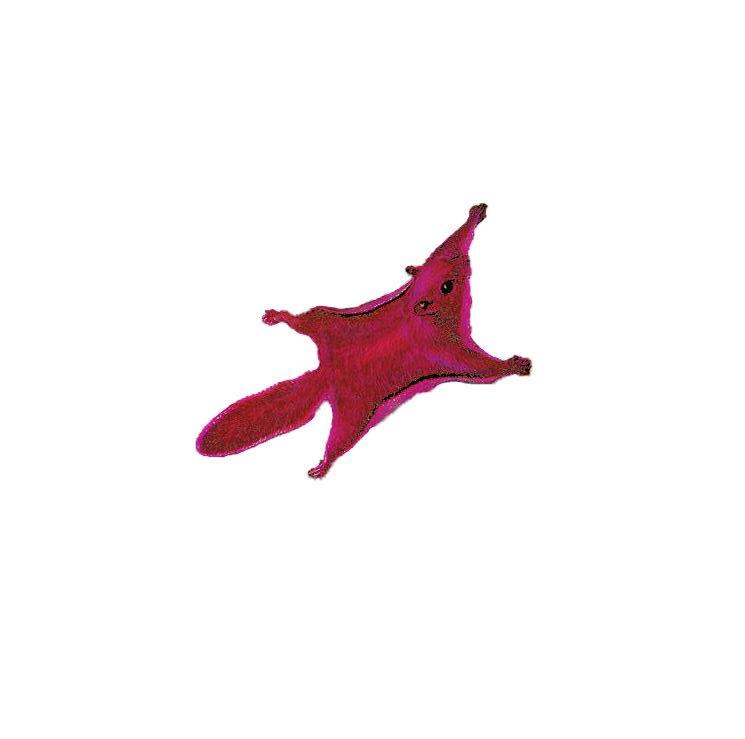
27 minute read
Mola mola, mo’ problems
Fluorescence in flying squirrels
Imagine walking through the woods at dusk and seeing, gliding across your path, a flying squirrel glowing bright pink. BY MEGAN WASSICK, ENGLISH, 2019
Advertisement
Because of the limitations of the human eye, this would simply never happen to you. The experience was happenstance for researcher Jonathan Martin of Northland College, Wisconsin, who was using an ultraviolet flashlight to observe plants and lichen, only for a southern flying squirrel flying by to be illuminated in hot pink. Ultraviolet (UV) rays, which have a shorter wavelength than visible light, can produce certain types of fluorescence, like in the flying squirrel, that will remain undetected to the human eye without special tools.
Martin and a research team examined specimens of the three species of North American flying squirrels: the southern, northern, and Humboldt’s flying squirrel. 109 museum specimens, collected across more than 100 years, were photographed under UV light. 108 of them had fur that is in some degree fluorescent. Five living specimens observed in the wild displayed fluorescence in the same manner as the museum specimens.
But why the glow?
There are several possibilities. It may be an adaptation for low-light Mola Mola: Mo' Problems
BY TORI MARKIN, BUSINESS ADMINISTRATION, 2021
The deep sea is full of mysterious creatures, and the Mola Mola is no exception. The Mola Mola’s name reflects its unusual appearance—“Mola” being the latin word for “millstone,” a giant grey stone used for grinding wheat. When looking at the Mola Mola from an evolutionary standpoint, it’s hard to grasp how this parasite-ridden, clumsily-swimming fish with a hefty appetite has managed to survive the tides of natural selection.
The Mola navigates the deep sea at a leisurely two miles per hour, due to its lack of a tail to use to propel and steer its massive body. The Molas’ slow swimming makes them extremely vulnerable to over fifty genera of parasites, which have become their main predator. Their huge bodies combined with their diet of mainly low-nutrition jellyfish means they are forced to consume around 2600 tons daily. This jellyfish snacking habit is not only inefficient, but also painful. With the Mola’s nut-sized brain, it does not seem like it has won the evolutionary lottery.
The Mola Mola quietly maintains the title of the heaviest bony fish. The average Mola Mola weighs about 2200 pounds, but the largest spotted was off the coast of Japan, weighing conditions: unlike other North American squirrels, these three flying squirrel species are most active during dusk and night, and do not hibernate during the winter. Ultraviolet rays are more common during the night and UV vision is an asset to many other nocturnal mammals. In winter, the amount of UV radiation that reaches the earth from the sun is doubled. Initial study of the eye lenses of the southern flying squirrel show that they can transmit UV light and likely have better lowlight vision than other squirrels.
Their fluorescence may also have developed as a way to signal to others of their species, like showing their movement patterns while they glide, or contributing in some way to the selection of mates. Or it may be meant to communicate not within their species, but to fool those outside of it: several species of owls that live in the same range and prey on the flying squirrels, such as barn owls, barred owls, and great horned owls, show similar pink or magenta UV fluorescence. The fluorescent squirrels may have adapted to mimic these predators and avoid their notice.
While more research is required to illuminate the answer, or combination of answers, as to why these squirrels glow, it’s something to keep your eyes open for!
Journal of Mammalogy (2019). DOI: 10.1093/jmammal/gyy177
just over 5000 pounds. Without a legitimate tail, they use their large anal and dorsal fins like a rudder to awkwardly maneuver themselves. Efficient? Absolutely not. But it works.
Despite the Mola Mola’s slow swimming, its size gives it a considerable advantage over their fellow ocean inhabitants, so its only consistent predator is parasites. But fear not for the health of the Mola Mola. Seagulls and Molas have developed an unlikely symbiotic friendship, in which seagulls snack on the dozens of parasites that prey on the Mola while it sunbathes. Sunbathing also helps regulate the Mola’s body temperature after long dives for food.
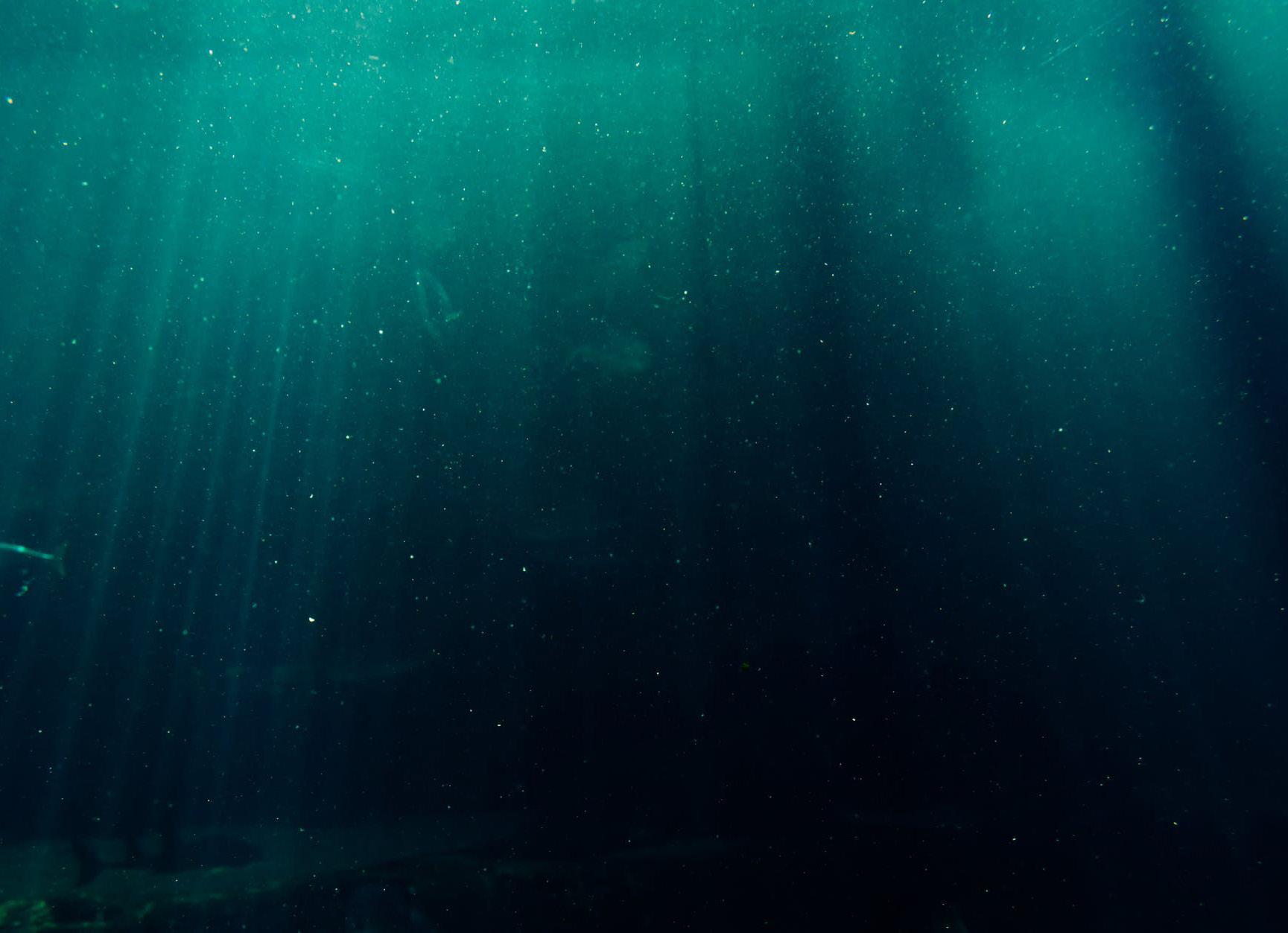
While the Mola’s diet of jellyfish may seem unbearable, it also sports a thick layer of mucus instead of scales, which mitigates the pain of the jellyfish sting.
And if that wasn’t enough to keep the Molas alive and well, the female Mola lays more eggs than any other vertebrate at three hundred million eggs at a time. You might not like the Mola, but at the very least, you should respect its tenacity.
Rolling in the deep: How marine animals quench their thirst BY SINAIA KEITH LANG, BIOLOGY, 2022 DESIGN BY LILLIE HOFFART, ENVIRONMENTAL SCIENCE, 2022


What if you lived in water? Would you be constantly searching for something to quench your thirst or would you constantly feel the relief that comes with an end to the parched feeling? The answer: it depends. Fish and other marine animals, like all living things, need water— the universal solvent—to survive. Vertebrates in particular, including fish, mammals, reptiles, amphibians, and birds, require a dissolved salt concentration of 0.9 percent. How those animals that live in water maintain this concentration, however, varies from species to species and from environment to environment. Freshwater fish, such as goldfish, live in water that is hypotonic. This means that the concentration of dissolved substances in their tissues is higher than in their environment. As a result, the water is constantly trying to diffuse into the fish’s tissues to attain equilibrium, that is, to balance out the difference in concentrations. In response, freshwater fish are constantly urinating to remove excess water from their bodies. Their urine is extremely diluted in order to retain their salinity. Additionally, the cells in their gills have adapted to collect more salts than human cells do. In sharp contrast, bony saltwater fish, such as tuna, live in water that is hypertonic, meaning that the concentration of dissolved substances in their tissues is lower than in their environment. The fish seep water out of their tissues in a process known as osmosis. To compensate, saltwater fish constantly consume water. Marine fish have an enzyme in their gills that helps them pump the excess salt out of their bodies. The kidneys of marine fish have also evolved to excrete surplus salts via extremely concentrated urine. Freshwater and saltwater fish species that cannot tolerate changes in salinity are called stenohaline species (“steno” meaning narrow and “haline” meaning salt). Should a tuna swim into a freshwater stream, it would die. The opposite, euryhaline species (“eury” meaning wide), can survive a range of salinity. Salmon, for example, are born and spawn in freshwater but spend the majority of their lives in the sea. These animals retain the adaptations found in both freshwater and saltwater fish, although they do need some time to acclimate to the changes in their environment (like humans getting over jet lag). This usually occurs in the time it takes the fish to swim through the brackish waters that lie between the two environments. Marine mammals, like sea lions and whales, have kidneys that have adapted to increase the amount of water recovered from the blood that filters through them, much like saltwater fish. Unlike saltwater How those animals that live in water maintain [salt concentrations] varies from species to species and from environment to environment.” “

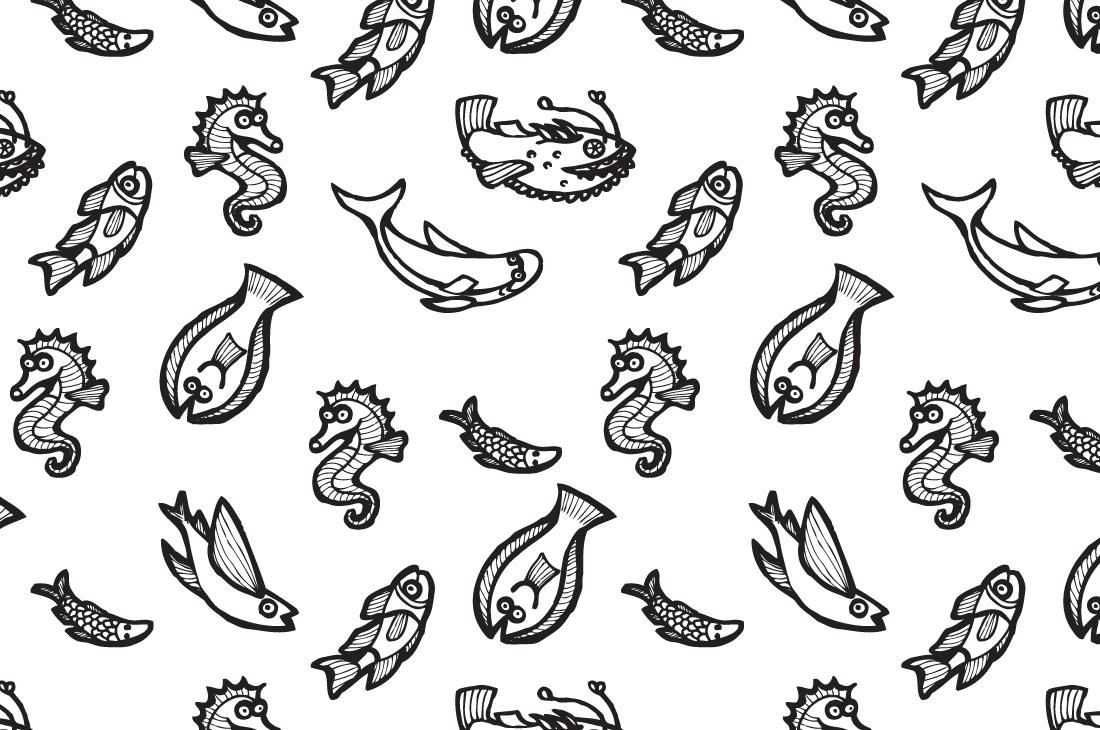
fish, however, marine mammals rarely drink water. Because marine mammals are mostly carnivores, their diets consist of animals with the same concentration of salts in their tissues. Unlike mercury, a toxic substance that increases in concentration as it travels up the food chain in a process known as biomagnification, salt concentrations remain at 0.9 percent because the mammals get additional water as a byproduct of the breakdown of nutrients. As such, their blood salinity remains fairly constant. On occasions when their blood salinity is too high, some marine mammals will drink water, but it is very rare.
Sharks and rays in saltwater use an approach that differs immensely from those of other aquatic organisms. Sharks and rays produce huge amounts of urea, which is usually excreted in urine as a waste product from the breakdown of proteins. The concentration of urea in their tissues is about the same as the concentration of salt in their environments, so water does not need to travel into or out of the animals’ cells. In this case, the animals are living in an environment that is isotonic to their tissues. If water is needed, it is absorbed, along with its dissolved salts, through the gills. Any excess salts that accumulate are removed from their bodies via their digestive systems.

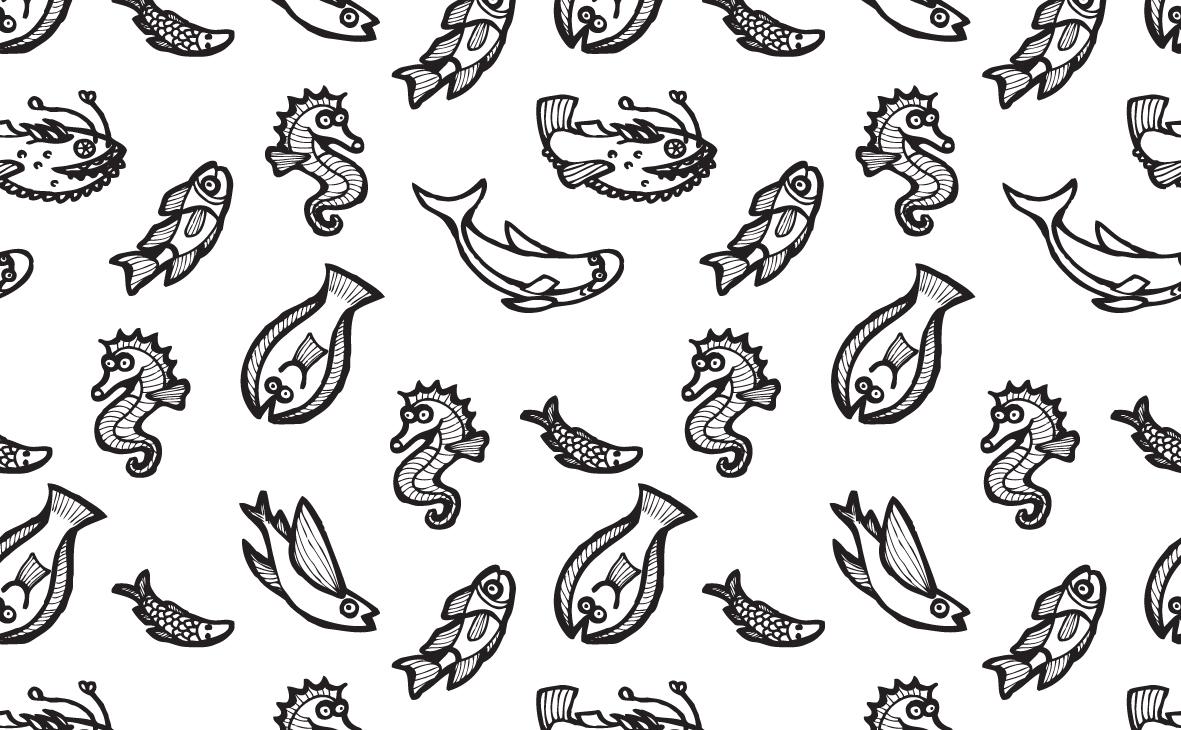
Comparatively, land-dwelling humans require the ingestion of three to four liters of water per day. This is your friendly reminder to drink water; it maintains salinity concentrations at a healthy level, so our tissues and cells remain in their isotonic, balanced environment. Stay hydrated, friends! PHOTO BY MELANIE CHADWICK
An unknown world
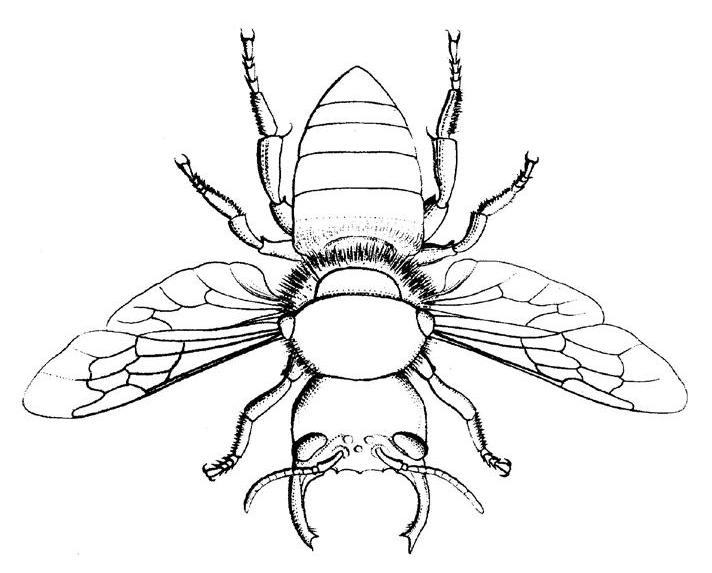
It’s estimated that only five percent of the world’s seafloor has been mapped out, leaving the other 95 percent undiscovered by mankind. And while almost all of the Earth’s land has been visited or inhabited by people, new species continue to be found in remote areas. Even more surprisingly, areas well-traveled by people, including New York City’s Central Park, have been known to host undiscovered species in recent years. In 2018, scientists all over the globe discovered over 200 new species of plants and animals, many of which remain mysteries to the scientific communities. Here are some of the unique organisms uncovered just last year: DESIGN BY KYLA VIGDOR, DESIGN, 2021 BY YASMINE MYFTIJA, BIOLOGY, 2021
Hippocampus japapigu
Nymphister kronaueri
This fascinating species of beetle was first observed in Costa Rica. The miniscule brown beetle hitches a ride on the army ant, Eciton mexicanum, blending in completely as it mimics the shape and color of the ant’s abdomenal region. It clamps down onto the ant’s body with its mouth and takes a rest as the ant walks for the both of them. The beetle can detach from the ants, walking around and feeding until their nomadic hosts move on. Ants with the beetle attached to their body can be distinguished by appearing to have two abdomens instead of one. N. kronaueri is also thought to use chemical signals, but scientists are still attempting to figure out how the beetle keeps itself from falling prey to others.
Also known as the “Japan pig” seahorse, this sea creature is roughly the size of a jelly bean and has a coloration that allows it to blend into the reefs of southeastern Japan. It has two protrusions on its neck that bear a striking resemblance to wings, but the function remains unknown. This newly discovered pygmy seahorse calls the algae and soft coral reefs surrounding Japan its home, and it is observed less frequently than their counterparts in the Hippocampus genus.
Megachile pluto
A bee that was thought to have been extinct has been rediscovered in Indonesia. Megachile pluto, commonly known as the Wallace Giant Bee, has a body comparable to the size of a thumb and a similarly large wingspan. It was considered the world’s largest bee and was thought to have been extinct since its last sighting in 1981. Megachile pluto has only been found on three Indonesian islands, but the habitats of these bees have drastically changed over the years; oil palm plantations have taken over the region, raising concerns for the safety of these bees. The bees have even been labeled as a vulnerable species by the IUCN.

Miconia rheophytica
Found along a river in the Colombian Andes, this newly discovered plant species produces a sky-blue berry that is thought to drop into the river, subsequently being carried down and embedded into a new spot where another plant can grow. However, the plant is already listed as an endangered species by the International Union for the Conservation of Nature (IUCN) and faces other imminent threats. The surrounding area may become a construction site for a hydroelectric dam in the next few years, the effects of which could wipe out the species in the region completely.
M. pluto also have an extremely large set of mandibles and are likely able to sting. Curiously, males and females of the species show sexual dimorphism, meaning that they have different characteristics in addition to their sex organs. Females grow much larger than their male counterparts and only the former have large jaws. While the prospect of giant bees may not be exciting for those with phobias, the rediscovery of M. pluto in its natural environment, which had been threatened by widespread deforestation, is thrilling to biologists.
Last year was full of bizarre and fascinating discoveries. Even so, scientists believe that only one-fourth of all species on Earth have been discovered. With an unknown world full of new creatures just waiting to be found, it looks like scientists’ work is just beginning.
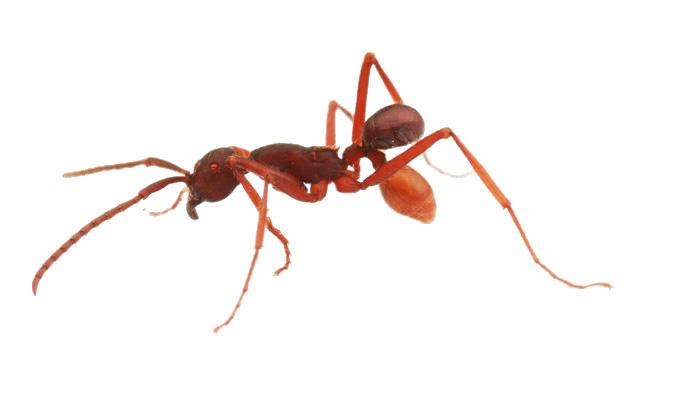
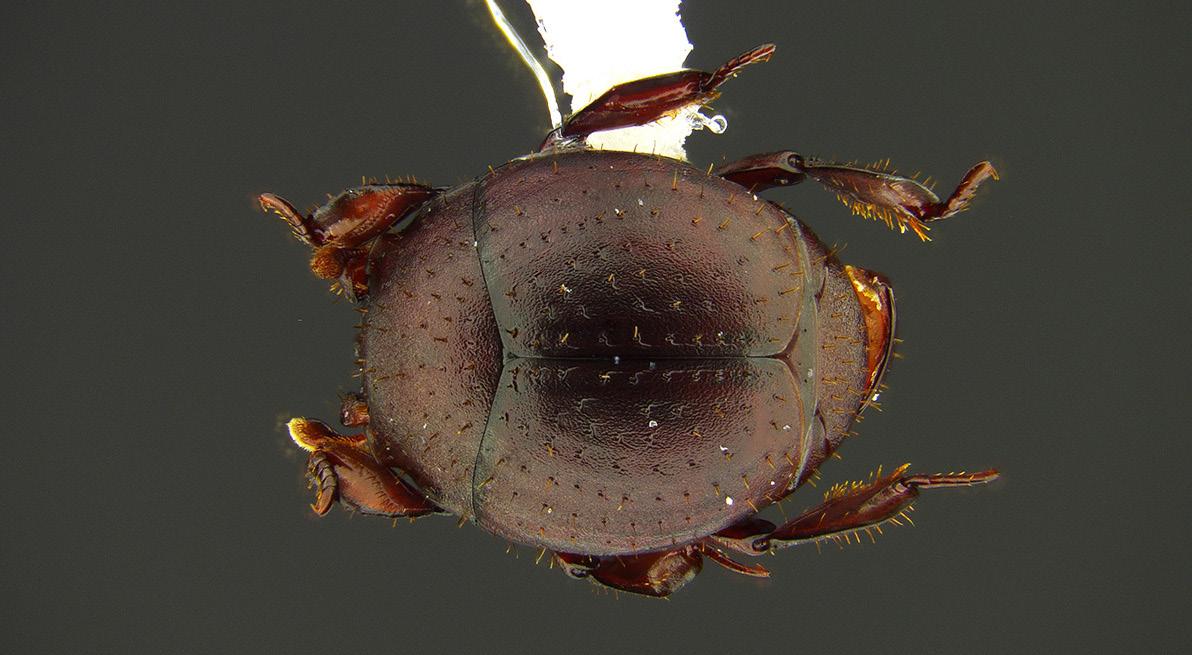
Nature’s symphonies:
How songbirds create complex melodies
BY ROXANNE LEE, ENVIRONMENTAL SCIENCE & POLICY, 2019
One of most popular signifiers of spring is the sound of bird song finally breaking the long winter silence. But how do they create such beautiful sounds, and why do they do it?
The birds typically imagined when thinking of birds singing are songbirds. These are part a group of about 70 families of birds in a clade—line of descendants—called Passeri, associated with melodic, complex songs.
The term “bird song” refers to complex vocal patterns with clear structure and rhythm created by a bird that serve a specific function, as opposed to “bird calls,” which are short, simple, innate vocalizations.
Songbirds produce their songs via an organ called a syrinx, or lower larynx, found at the base of the trachea where it splits into dual bronchial tubes. The muscles of the syrinx manipulate air as it flows through the trachea, producing sounds. Each of the two branches of the syrinx is individually controlled, allowing birds to simultaneously create two unrelated pitches, essentially allowing them to duet with themselves and sing incredibly complex songs. The Wood Thrush, for example, can sing simultaneous rising and falling notes in its song. Most of what we know about song development in songbirds comes from the study of male zebra finches. Songbirds learn their songs through two developmental periods. In the first period, the sensory period, fledgling birds listen to the songs of their fathers and male adults around them. Following this is the sensorimotor period, a period of intense practice when the bird practices its own song. The practice songs are unstructured and messy, before they are refined into one resembling that of its community. Even when raised in isolation, zebra finches still sing, but their song structures do not resemble those of their wild relatives’.
Songbirds sing for a variety of reasons: to claim and establish territory, impress a mate, establish social bonds, and generally communicate.
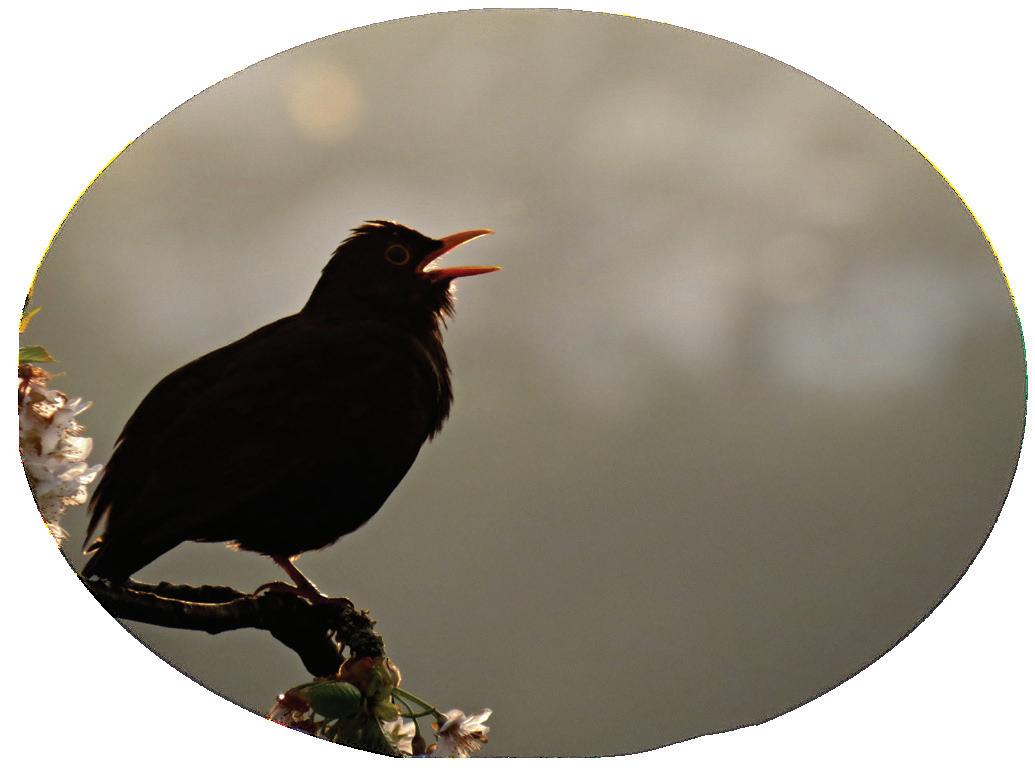
Bird song may have risen in part due to their surrounding environment. Birds that sing typically find mates in low-visibility areas, like thick woodlands, where auditory cues are more likely to be picked up by potential mates than visual cues.

There is still much to learn about bird songs—why birds sing in a dawn chorus is not well understood, and male songbirds’ songs are studied much more than females, potentially leaving whole other range of songbird behaviors yet to be discovered.
Smart soaring: The inner compass of birds
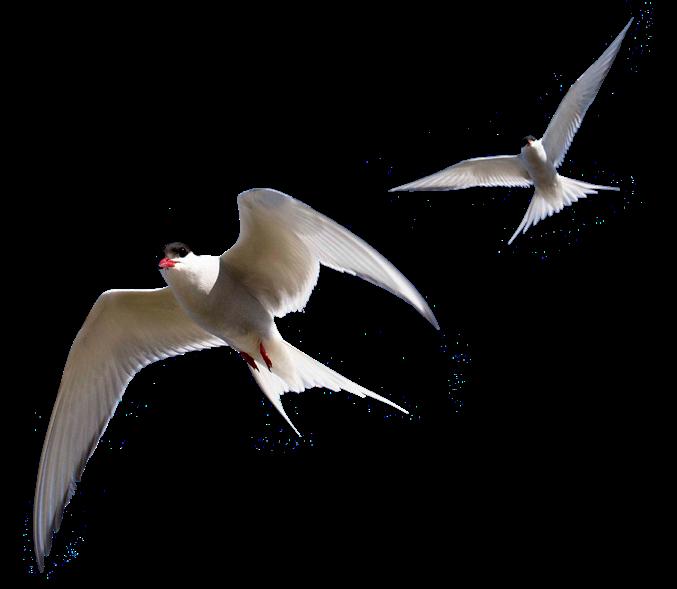
While many humans cannot navigate their own city without the help of a GPS, some bird species such as the Arctic fern can fly nearly 50,000 miles a year without the aid of any map. This spring, more than 4,000 species of birds will migrate to regions with abundant food and areas to nest, guided only by their internal compasses. These “internal compasses” are essentially the various physiological traits that migratory birds have which allow them to complete their impressive journeys. BY OLIVIA CLAUSEN, ECONOMICS & ENVIRONMENTAL STUDIES, 2021
One of the most common navigational approaches is to fly along celestial and geomagnetic routes created by Earth’s magnetic fields and the sun. A study conducted on the behavior of robins at Goethe University in Frankfurt, Germany concluded that birds have “a light-dependent compass in their eyes”, which allows them to determine the direction of the Earth’s magnetic field. According to test results, this “compass” consists of a special protein in their eyes called cryptochrome, which uses energy absorbed from UV wavelength light to produce the co-enzyme FADH-. FADH- subsequently generates two free electrons, and these electrons are the essential factors which can be used to detect changes in the Earth’s magnetic field.
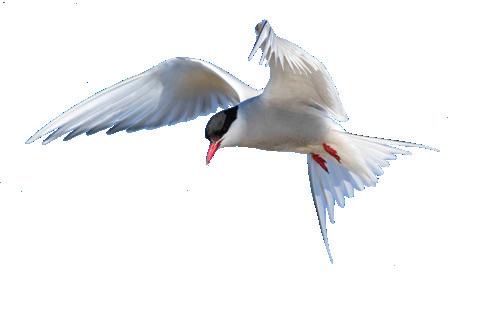
Birds are also able to migrate through the use of olfactory navigation, a form of navigation in which cues from unique scents are used to guide an animal’s movements. Research conducted by the Italian ethologist Floriano Papi on homing pigeons revealed that birds create an olfactory map when they fly from their home location to another. This map familiarizes them with landmark scents along their route and allows them to return home using their sense of smell. When the homing pigeons were taken to a new place without flying there themselves, they were completely disoriented and had no means of returning home—demonstrating how essential their olfactory abilities may be.
Exactly how birds migrate continues to be a matter of debate due to the number of ways in which this navigation may be facilitated. While the mechanisms by which these birds find their way may differ, their migration continues to be a source of wonder for many of us.
What’s at the bottom of the ocean?
Taking a dive into the deep
DESIGN BY KRISTI BUI, COMPUTER SCIENCE, 2021 BY CHRISTINA MCCONNEY, BIOLOGY, 2021
Everybody wonders about what is at the bottom of the ocean, and throughout history many have attempted to answer this daunting question. However, their efforts to uncover the mysteries of the ocean floor have made barely a dent in uncovering what actually lurks down below. The ocean makes up 70 percent of the earth’s surface, and with nearly 80 percent of it remaining uncharted and unexplored, it’s no wonder that humanity has struggled to come to a conclusion of what actually resides down in the sea bed.
Despite the discouraging lack of exploration and documentation of this vast body of water, the 20th century brought about a wave of curiosity that has continued into today’s society—aiming to explore and explain, mile by mile, exactly what we can expect to find at the bottom of the ocean. From shipwrecks to alien-like life forms, glowing fish to microorganisms, piece by piece the jigsaw puzzle that is the ocean floor is being put together.
In the mid-19th century, Edward Forbes developed his azoic hypothesis: declaring that no life existed in the deep ocean. Noticing a trend in the decrease of plant and animal life with the increase of ocean depth, he hypothesised that life would altogether cease to exist closer to the ocean floor. The azoic theory was held to be true for 25 years; the rationale at the time concluding that the large amounts of pressure, cold, and total absence of light wouldn’t allow for the sustainability of life. Today, thanks to the technology and knowledge available, we know that the ocean floor is bustling with life— if you know where to look.

Deep oceans most noticeably lack light and warm temperatures, making the existence of life at such depths seemingly impossible. However, there is a large ecosystem that thrives in these benthic environments, living around hydrothermal ocean vents and almost appearing to defy the laws of nature. Meiofauna—small invertebrate inhabitants of the benthic zone—are diverse across different layers of the ocean floor; varying most prominently in response to temporal differences. In the depths of the Mid-Atlantic, mussels are one of the most common types of thermal vent dwellers seen in colder temperatures. Venture into warmer temperatures, and crustaceans begin to emerge as the dominant life form.
Vanhoeffenella, a genus of deep sea monothalids, are dispersed generously among the bustling sea floor and have been documented in texts since the start of ocean exploration. Easily identifiable by their characteristic eye-like appearance, these creatures are found on the ocean floor all over the world. However, despite their widespread presence in both the ocean and history, there is hardly anything known about their diversity. In 2017, a team of scientists from the University of Southampton, Waterfront Campus decided to investigate and hopefully shine some much needed light on these deep sea dwellers. The team was ultimately able to identify ten distinct species within the genus, adding to the four previously known and increasing overall knowledge as to the nature of the species.
The deep ocean isn’t only limited to living inhabitants: a number of inanimate objects litter the ocean floor and contribute to mystery that surrounds the deep blue depths. Shipwrecks lay scattered all over the ocean floor, many of them remaining unknown to the surface world. The deepest one, making a name for itself in the Guiness Book of World Records at a depth of 18,904 feet, was found resting at the bottom of the South Atlantic Ocean. The SS Rio Grande, a German Blockade Runner used in WWII, was discovered in 1996 by Blue Water Recoveries and serves to show that aquatic life is teeming with much more than just living organisms.
Despite the unearthing of the tenants residing at the bottom of the deep blue sea—both animate and inanimate—there are still a large quantity of organisms and artifacts left to be found. Discovery of different marine life is being relentlessly pursued around the world, spurred on by the looming threat of global climate change drastically affecting the ocean’s trophic levels. With natural human curiosity as a catalyst, we are diving deeper and deeper into the secret life that exists at the bottom of the ocean.
Endeavour (2006). DOI:10.1016/j.endeavour.2006.10.003 Protist (2018). DOI:10.1016/j.protis.2017.11.003 Deep Sea Research Part II: Topical Studies in Oceanography (2017). DOI:10.1016/j. dsr2.2016.05.028
PHOTO BY PIXABAY
Have pouch, will carry:
NU Sci explains kangaroo pouches

BY RAFI RAZZAQUE, ENVIRONMENTAL SCIENCE, 2019 W hy do kangaroos carry joeys in their pouches? Put simply, underdeveloped offspring. Kangaroos, along with wallabies, koalas, and wombats, are classified as marsupials. The defining characteristic of animals in the infraclass Marsupialia (derived from the Latin term marsupium, meaning “pouch”) is the way they carry their young in a pouch post-birth.
All marsupials have short gestation periods: the red kangaroo, largest of all kangaroos, delivers a lima beansized neonate after 30–35 days, but other marsupials have a gestation period as low as 12 days. The kangaroo neonates are born underdeveloped and blind and crawl from one of the mother’s two uteri into her pouch. From there, the joey nurses off one of the mother’s four teats, which has the effect of starting the mother’s cycle once more.
After about 180 days, the joey will be large enough to emerge from the pouch; before then, you might catch it poking its head out from time to time but never leaving fully. Around 230 days after birth, the young kangaroo will leave the pouch for the last time. A mother kangaroo will also push off her offspring to dissuade it from returning to the pouch at this point. Given that a mother kangaroo handles up to three joeys in various stages of development (one in an egg state, one in a neonate state in the pouch, and one independent of the pouch but still breast fed), the mother likely already has another joey dependent on her pouch.
As for how kangaroos and other marsupials ended up with pouches—that remains a challenge to explain. Pouches are not bone structure and are not observable in fossil records. Additionally, DNA evidence from marsupial ancestors does not exist. Researchers have questioned whether pouches enable the mother to incubate several offspring at various development stages in difficult, dry conditions. Additionally, the time and energy kangaroos spend foraging for food may have lead to a selection for smaller, underdeveloped embryos at birth. Lastly, pouches offer the young a degree of protection from predators; pouch development may have been selected by survival rates of joeys that utilized a pouch.
While the evolutionary necessity of marsupial pouches is a bit unknown, the fascinating ways mother kangaroos develop their young in pouches definitely set them apart from most mammals. Not unlike us, marsupials carry their protected, precious, and enchanting offspring in publicly observable ways. And good thing they do!
Which hand has the upper hand?
To those who have heard or used the phrase, “Only left-handed people are in their right mind,” you are actually not that misguided. People with left-hand dominance depend on the right hemisphere of their brain for movement and coordination, and vice versa for those who are right-handed. According to a 2014 study published in Frontiers in Psychology, 85 percent of people consider themselves right-handed, with the rest claiming left-hand dominance. But what is the cause of this phenomenon? Why is the majority of the population right-handed, and what, if any, are the results of acquiring such a trait? BY NATALIA CHAVEZ, CELL & MOLECULAR BIOLOGY, 2021

The answer involves both the evolution and genetics of the human race. A study led by Valentina Parma and Professor Castiello from the University of Padua discovered that hand preference develops in the womb as early as 18 weeks. What makes more than three-fourths of the population righthanded, though, involves evolutionary natural selection. We depend on the left hemisphere of our brain for motor control in our right hand. Perhaps by no coincidence, the left hemisphere of the brain is also responsible for language production. The synchronization of having the left hemisphere control the movement of the right hand and be responsible for the production of written language is thought to be an evolutionary advantage. This dual functioning reduces the amount of cross communication needed between the two hemispheres in right-handed people.

With regards to the genetic theory behind hand preference, scientists have begun to explain the existence of two alleles that are associated with brain dominance. The pair of alleles go by the names of D and C genes. The dominant allele, in this case, is the D gene, and is the one that leads way to righthand dominance. The C genes are a minority in the gene pool, but are still present as they are not necessarily harmful to the organism. This is the reason why, although there are few, they are still present in society.
Overall, both theories are interesting in that they show the collaboration of internal and external factors that affect an organism in its entirety. With a trait as harmless as a dominance in either the right or left hand, scientists are able to take note of how intricate the human body really is and how susceptible it is to environmental and societal pressures.
Ophidiophobia: why you may have it
BY LUCAS PRINCIPE, ENVIRONMENTAL SCIENCE & PHILOSOPHY, 2020
Ophidiophobia, or the fear of snakes, is consistently listed as one of America’s top aversions, along with public speaking, heights, needles, and small spaces. Most notably, a 2001 Gallup poll found over 50 percent of Americans fear these serpentine reptiles—even though most Americans probably don’t interact with them on anywhere near a regular basis.
Kyla I actually own a pet snake. A three-foot-long Ball Python. He’s a lovely pet. And he loves to wrap himself around my neck and crawl through my shirt. I’ve never been afraid of him. But whenever I take him out of his cage around other people, I watch them recoil. If it’s a boring day at home, I still chase my mother around the house with him while she shrieks. It’s these kind of reactions that made me wonder, why are so many people afraid of snakes?
Surprisingly, there has been a large amount of early developmental research conducted on this phenomenon. The two competing schools of thought are as follows: humans have an innate fear of snakes; or, humans have an evolved predisposition to associate fear with snakes, though the actual fear is not innate. Both of these theories build off the fact that snakes posed a serious threat to our ancient human ancestors. An encounter with one 50 million years ago, before modern medicinal measures such as antivenom, could easily leave a primate dead.
One 2017 study by researchers at the Max Planck Institute for Human Cognitive and Brain Sciences, published in Frontiers in Psychology, recorded the pupil dilation reaction in six-month-old infants when shown photos of evolutionarily threatening and non-threatening species. The researchers chose to study this response due to the pupils’ connection to the same neural system—the noradrenergic system—that produces stress in an individual.
The team found infants reacted with larger pupil dilation when shown photos of spiders and snakes as opposed to photos of flowers and fish—suggesting a fear of these animals may be innate in humans.
“It’s a very long period of coevolution—nearly 40 to 60 million years of it, that early human ancestors and spiders and snakes have interacted,” lead researcher Stephanie Hoehl explained to National Geographic. The study concluded that an innate fear of snakes could be an evolutionary defense mechanism against a potentially lethal bite.
Other research, however, remains more skeptical about this claim. A 2008 study published in Developmental Science used an auditory-visual matching paradigm with infants aged 8–16 months. The infants were simultaneously presented two films—one of a snake and the other of an exotic animal—appearing with the recording of either a happy or a frightened human voice.
The researchers hypothesized,
“if infants have a predisposition to associate snakes with fear…they should look longer at snakes when they hear a frightened voice.” And the team’s data revealed just that—there was a significant tendency in infants to associate snakes with fearful stimuli.
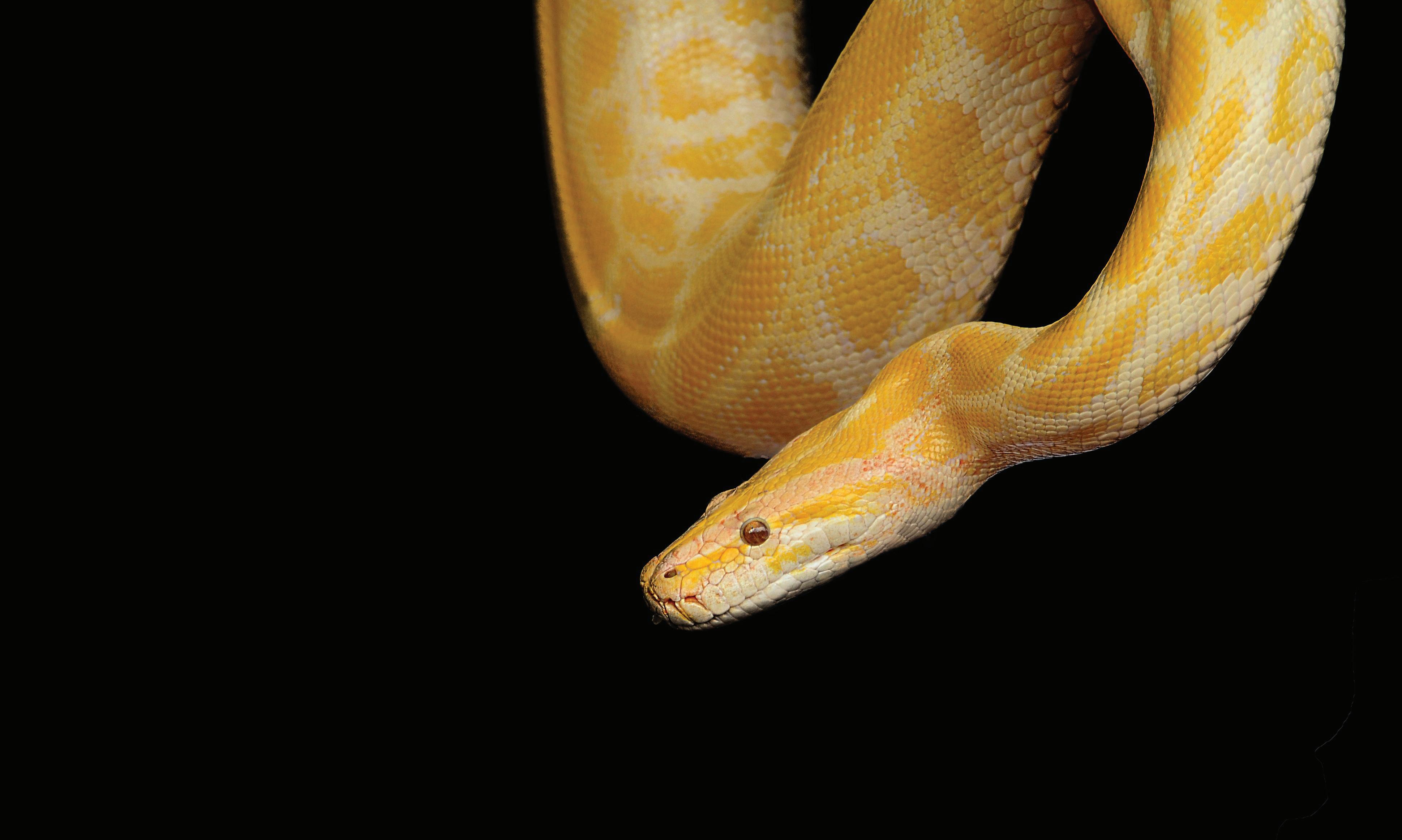
“What we’re suggesting is that we have these biases to detect things like snakes and spiders really quickly, and to associate them with things that are yucky or bad, like a fearful voice,” said Vanessa LoBue, co-author of the study, to Science Daily.
The research suggests that humans can both detect and learn to be afraid of snakes more quickly than other animals. However, the data does not support the hypothesis that the fear of snakes is necessarily innate.
Regardless of the answer, a growing segment of the population is turning away from traditional pets, such as cats and dogs, and embracing scaled species instead. Between 2007 and 2012, the number of American households that own a pet snake increased by 42 percent, according to the American Veterinary Medical Association. In the United Kingdom, the British Federation of Herpetologists estimates that, as of 2008, there are 1.5 million more reptiles than dogs being kept as pets.


With numbers like these, it’s increasingly likely that at some point in your life you’ll find yourself walking into the living room of a new friend to find a 10-gallon tank equipped with a heat lamp and a python sitting underneath it. When that happens, overcome your evolutionary tendencies, be calm, and ask to hold it. I promise you’ll be surprised how friendly they can be.









